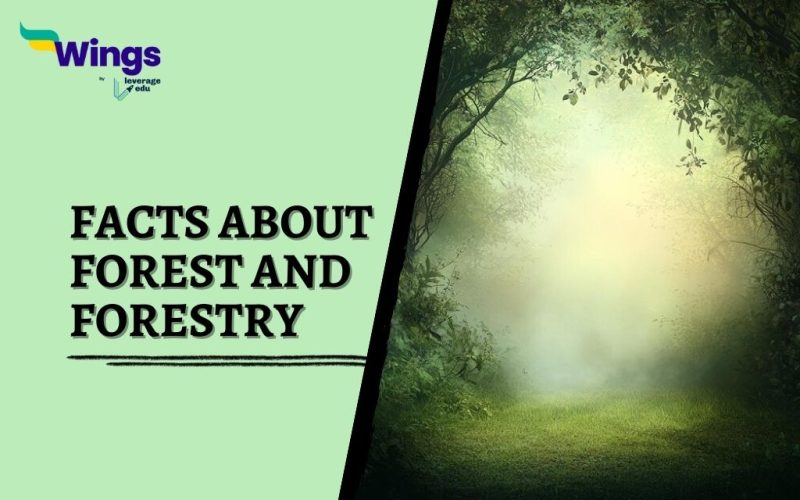Facts about forest and forestry: The United Nations declared March 21 as the International Day of Forests in 2012 to highlight the significance of all types of forests and promote their conservation. To celebrate and raise awareness about the contributions of trees to our lives, various events are held worldwide each year. These are international-level efforts put forth by organisations like the UN. Many nations also take some measures to protect all forests but we cannot deny the need of the hour to cut forests for development.
Table of Contents
5 Forest Facts That No One Knows
Now we will cover some interesting forest facts that will enlighten you about the importance of forests. Moreover, these facts will let you know what you can do to save the forests.
- Forests are of three main types: temperate, tropical, and boreal, each with distinct climates and ecosystems.
- Forests support around 90% of the world’s species, providing habitats for countless plants, animals, and microorganisms. Therefore, when humans try to cut the cover of the forest, animals in the forest come on the roads.
- Forests play a crucial role in mitigating climate change by absorbing greenhouse gases, particularly carbon dioxide. They are estimated to sequester around 2.1 gigatonnes of CO2 annually.
- Forests are essential for watershed management. They help maintain the water cycle by absorbing rainfall and releasing water back into the atmosphere, which contributes to local and global rainfall patterns.
- Through photosynthesis, trees produce oxygen and filter pollutants from the air, acting as natural air purifiers.
- Approximately 1.6 billion people rely on forests for their livelihoods, obtaining food, medicine, and materials from these ecosystems. This forest fact must have helped you to know the importance of forests.
- Many modern medicines are derived from forest plants, with tropical forests contributing significantly to pharmaceutical discoveries.
- Forests provide renewable resources such as timber, paper, and non-timber products, supporting various industries and economies.
- Annually, about 18.7 million acres of forest are lost due to activities like agriculture, logging, and urban development, contributing to increased carbon emissions and habitat loss.
- The degradation of forests exacerbates climate change, leading to a cycle of environmental decline that affects biodiversity and human populations alike.
Forest Facts for School Students
The basic education of a child begins when they are in school. Adding the importance of forests to the syllabus will give them the right start to their lives.
- Forests are home to over 80% of the world’s terrestrial biodiversity.
- Tropical rainforests are the most biologically diverse forests, with the Amazon rainforest having the highest biodiversity.
- Forests provide essential resources like food, medicine, and materials for around 1.6 billion people.
- Trees in forests produce oxygen and filter pollutants from the air, acting as natural air purifiers.
- Deforestation is a major threat, with around 18.7 million acres of forest lost annually due to activities like agriculture and logging.
- Forests have different layers, including the canopy, understory, and forest floor, each supporting unique ecosystems.
- Trees in forests have rings that can be counted to determine their age and past climate conditions.
- Forest kindergartens are becoming popular, allowing children to learn and play in a natural environment.
Facts About Forest Animals
Now that we know everything about the facts about forestry, it is time we should know facts about forest animals.
- Forests are home to around 6,700 animal species, including mammals, birds, reptiles, and insects.
- We have already mentioned above, that forests have different layers. These layers are the forest floor, herbaceous layer, shrub layer, and tree layer where different animals thrive. Each layer provides unique food and shelter opportunities.
- Notable forest animals include the African forest elephant, okapi, black bear, various monkeys, great hornbill, and harpy eagle.
- Forest animals play crucial roles in their ecosystems, such as seed dispersal, pollination, and maintaining the food web.
- Many forest animals have adaptations for camouflage, climbing, or gliding to survive in their environment. For example, the sugar glider can glide between trees.
- Forests provide essential spots for breeding and nesting, offering protection from predators and harsh weather.
- Animals in forests have diverse diets, ranging from leaves and fruits to insects and small mammals.
- Habitat loss due to deforestation and climate change poses significant threats to forest animals, leading to declines in biodiversity.
- Many forest animals, such as the African forest elephant and okapi, are endangered due to poaching and habitat destruction.
- Forest animals often engage in symbiotic relationships, such as birds that eat insects off larger mammals, benefiting both species.
Find Related Reads Here!
These are all the facts about forests and forestry. Hope you had a good time learning about these interesting facts. If you want to know more about topics like this, then visit our general knowledge page! Alternatively, you can also read our blog on general knowledge for competitive exams.
 One app for all your study abroad needs
One app for all your study abroad needs













